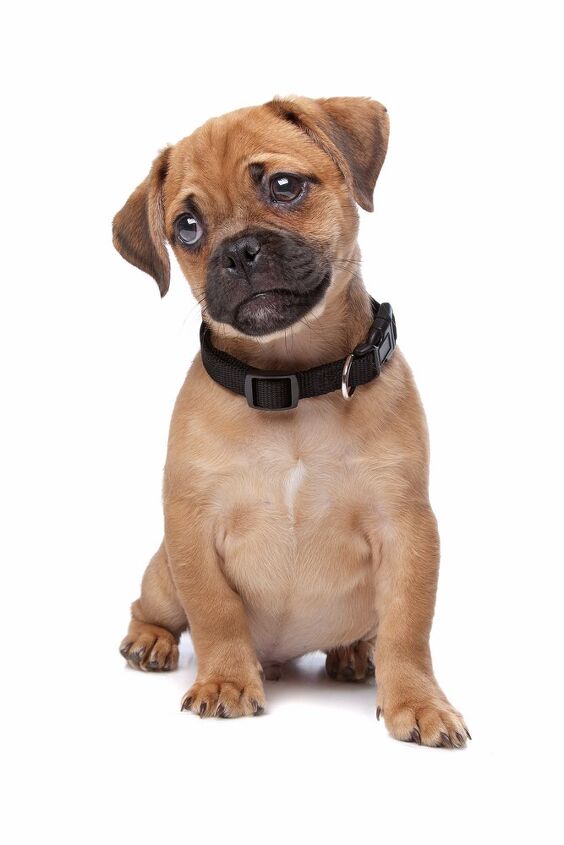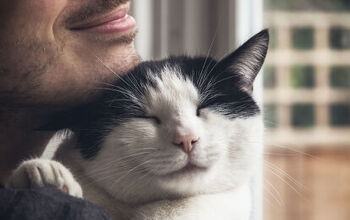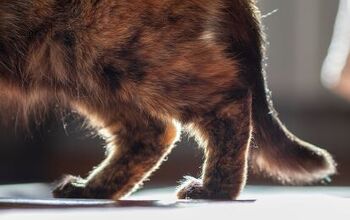Daug


About Daug
Lively, friendly and utterly adorable, the Daug is a companion anyone would wish for. And having in mind who his parents are, it really is no surprise that this mixed breed dog has such wonderful qualities. This designer dog was developed by crossing the short-legged Dachshund with the wrinkly-faced Pug. Needless to say, the offspring of these two very different dogs will have a unique yet beautiful appearance. While designer dogs are generally quite unpredictable in terms of their looks, most Daug dogs will inherit the best traits of both parents.
Of course, that’s not to say that some of the less desirable qualities of the parental breeds won’t be present, as well. The Daug can be a bit stubborn or have a tendency to be distrustful of strangers. Luckily, most (if not all) of these issues can be prevented or corrected with timely socialization and training.
The Daug is not overly demanding, both in terms of his exercise needs and care and grooming. These hybrids are a good choice for a family pet or companion for seniors and singles. Their affectionate and adaptable personality make them an all-around great breed for all types of pet owners. Let’s see what makes Daug stand out in the colorful world of designer dog breeds!
Owing to his adaptability and low activity levels, the Daug makes a perfect apartment pet and a companion for seniors.
Unlike purebreds that have usually been around for centuries, designer dogs are a fairly new phenomenon. Granted, mixed breed dogs have been around for as long as dogs have been around, but it’s only recently that they became a product of intentional breeding efforts. Breeders are taking established breeds and combining them into new hybrids, in hopes it will create dogs that are not that far removed from their parents- but yet with improved health and qualities. The fact that the line between “accidental” mixed breed dogs and designer dogs is quite thin makes it that much harder to pinpoint the origin of most hybrid breeds. Apart from the few of the most popular ones, the majority of designer dogs doesn’t have a well-documented history.
The Daug is the same. There’s no information on how these cute pups first came to be, even though their popularity is rising. But if their origin story is anything like their other hybrid fellows, the first litter of Daug puppies was probably born sometime in the last 30 years and somewhere in the United States.
The Daug is the offspring of two purebred dogs, the Dachshund, and the Pug. In most cases- if not all- these hybrids are so-called F1 mixes or first generation mixes. This means that they’re 50 percent Doxie and 50 percent Pug, and there are no further crossbreeding. Sometimes, people will start crossing two hybrids of the same breed (e.g. Daug to Daug) to perfect or select certain traits and create a standard. However, most stop at first generation, as these are thought to be the healthiest mixes.
One of the main reasons why breeders got into making designer dogs is the idea it will improve the health of certain heavily inbred purebred lines riddled with genetic issues. For instance, crossing a Doxie to a Pug could minimize or eliminate some of the breed-specific problems such as the back injuries common for the Dachshund or brachycephalic syndrome often seen in Pugs. While the jury is still out on ‘hybrid vigor’ in designer dogs, Daug certainly seems to display the best of both parental breeds in all aspects.
Even though the family tree of the Daug definitely speaks about the overall qualities of this hybrid, these dogs are not recognized by the American Kennel Club. As a result, you won’t be able to obtain official pedigree papers for a Daug puppy. Some smaller clubs might offer their forms of certifications for reputable breeders, though.
All dogs are unique- but their nutritive needs are mostly the same, at least in their very essence. Dogs are omnivores and need a well-balanced ratio of protein, healthy fats, and complex carbs, as well as certain minerals and vitamins in their diet. To make sure that their pet is getting all the important nutrients, most pet owners turn to commercial pet food. Daug will also do well on high-quality dry food, as long as it is suitable for their own unique traits. This means you should choose kibble that is appropriate for their age (puppy, adult, senior) size, and energy level (small breed kibble).
From time to time, you can use some cooked meat and dog-safe veggies or canned food to treat your pooch, but you shouldn’t base their whole diet around it. In case that, for some reason, you prefer not to feed your dog commercial pet food, you should consult a veterinarian for advice and tips on alternative options for dog diets.
Small breed dogs don’t need much food on a daily basis, so make sure to pay attention to serving sizes. Follow the recommended amounts printed in the feeding guide. Otherwise, your pet might start gaining weight quickly and become obese. Daug shouldn’t be free fed- instead, give them one or two meals a day.
Exceptionally loyal and devoted to their families, these small dogs will shower you with affection from day one.
Daug loves his family and is eager to please them. However, when the time for training comes, their stubborn streak might kick in. These designer dogs are undeniably smart, it’s just that they tend to have a mind of their own, as well, so they won’t do something unless they feel like it. To remedy this, rely on positive reinforcement training. Using treats and excited praise as motivation is sure to work, and your new puppy will learn how to behave in no time. Of course, just because you’re rewarding good behavior doesn’t mean you should be lax. Stay consistent with training and have a firm, confident attitude for best results.
In addition to the basic obedience training, every Daug puppy should have proper socialization, as well. Timely exposure to children, strangers, and other pets should make sure they keep their friendly demeanor as they mature.
The Daug can be prone to certain behavior issues, so it wouldn’t be a bad idea to train them in a way that would prevent specific problems from arising. These hybrids are good watchdogs, but it also means they will be prone to barking. Combine that with their tendency to become too attached to their owners, and you get a dog with a predisposition for separation anxiety, that will bark his head off when left alone for hours. To make sure this doesn’t happen, crate train your dog to give them a safe place in the house and teach them to stop barking on command.
On average, adult Daug will weigh between 15 and 20 pounds. These are small dogs that are ideal companions for those who live in a big city or a small apartment.
You’ll realize that Daug is a sweet, friendly pooch the first time they look at you with those big puppy eyes. Exceptionally loyal and devoted to their families, these small dogs will shower you with affection from day one. The Daug is cuddly and sweet with his family and will be friendly with other people, too, but he will be very wary of strangers. Particularly if not socialized on time, these dogs tend to be very distrustful of people they don’t know and as they’re also protective of their territory, they make the cutest watchdogs. Naturally, there’s not much these petite pooches could do even if they really spot an intruder (and not just the mailman), but at least they’ll let you know with a bark!
If they were trained and socialized on time, these designer dogs will get along great with children and other pets in the household. Older children are a better match, though- as young kids tend to be too rough in their play, trying to pick up a small dog or pinch them, and that can provoke the Daug to nip in return.
As a mixed breed dog, the Daug personality and temperament will vary depending on which parent they favor more. In general, though, these hybrids stand to inherit a lot of great traits, and a wonderful temperament from both the Doxie and the Pug.
The concept of hybrid vigor proposes that hybrid offspring has improved qualities, and a lot of people relate designer dogs to this concept. The belief is that crossbreeding will lead to healthier dogs, but it’s still impossible to claim this- there haven’t been any studies backing this up. In reality, a designer dog can be healthier than its parents, but they can also be at risk at two breed-specific pools of issues. The Daug is in the same boat as others
Generally, these are relatively healthy dogs. They could be at risk for some conditions their parents are prone to, such as Cushing’s disease, allergies, epilepsy, or diabetes. As a small breed dog, they are also more susceptible to obesity and tooth loss, so make sure to take preventive steps such as a healthy diet, lots of exercise, and good dental hygiene.
The average lifespan of a Daug dog is between 12 and 15 years.
The Daug might be a spirited dog with a lot of spunk, but they’re not overly energetic. In fact, this breed is quite laid-back and easy-going, and won’t be high maintenance when it comes to exercise. About 30 to 60 minutes of activity will keep them healthy and happy. Take them on walks, to the doggy park for a game of fetch or let them run about in a securely fenced backyard. After they get bored, they’ll promptly return to the couch for a round of cuddles with you.
Owing to his adaptability and low activity levels, the Daug makes a perfect apartment pet and a companion for seniors.
Daug loves his family and is eager to please them.
The Daug is recognized by the American Canine Hybrid Club, Designer Breed Registry, Designer Dogs Kennel Club, Dog Registry of America, and International Designer Canine Registry.
One of the things that are quite unpredictable about designer dogs is their appearance. Especially in cases where the two parental breeds don’t have much in common- you’re always in for a surprise! And apart from their size, the Dachshund and the Pug don’t look similar at all. From body and head shape to the coat, a lot will depend on which parent’s genes are more dominant.
The Doxie comes in 3 coat types (short, long, wiry) but the standard, short-haired variety is the one that’s most often the parent of a Daug. This means that in the majority of cases, these hybrids will have a short coat and be medium shedders. As for the colors, fawn, silver, black, reddish and black and brown bicolor are the most common.
If there ever was a breed that could trademark the pleading puppy look, it’s the Daug. The innocent appearance of these hybrids doesn’t reflect their behavior, though: in their puppyhood, all dogs are full of mischief. Start with training and socialization as early as possible- it will ensure your Doug puppy grows to be a friendly, well-adjusted pet.
Photo credit: Dora Zett/Shutterstock; Erik Lam/Shutterstock

A proud mama to seven dogs and ten cats, Angela spends her days writing for her fellow pet parents and pampering her furballs, all of whom are rescues. When she's not gushing over her adorable cats or playing with her dogs, she can be found curled up with a good fantasy book.
More by Angela Vuckovic
























